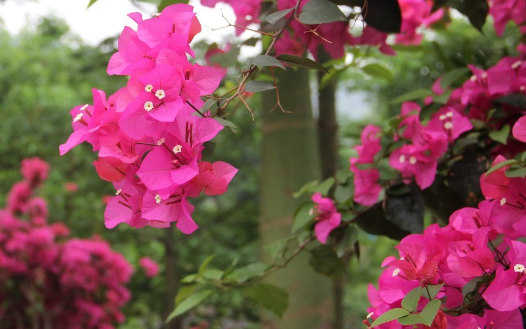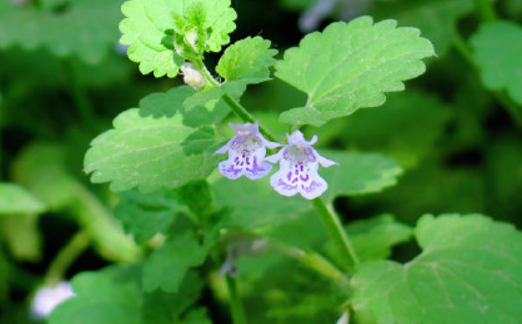When do rose plums usually blossom and bear fruit? When will it be ready for market? What is the efficacy? What are the planting techniques?
The fruit of Dahong Rose Plum is very large, with an average fruit weight of 105.2 grams, crisp and refreshing, rich in juice, moderate sweet and sour flavor, fragrant, high quality and so on. In which month do rose plums usually blossom and bear fruit? When will it be ready for market? What is the efficacy? What are the planting techniques? According to the data of Rosaceae, rose plum blossoms in April, and the fruit ripening period is mid-late August in Tai'an, Shandong Province, with high yield.

When will the rose plum be ready for market?
The main results are as follows: 1. Rose plums are matured and put on the market in mid-late August, and the fruits are very resistant to storage and transportation, with a shelf life of about 25 days, and can be stored for 3-4 months under the condition of 0-3 ℃.
2. The tree potential is moderate, the germination rate is high, and the long, medium and short fruit branches of young trees can bear good fruit. After entering the full fruit stage, short fruit branches and flower-like fruit branches bear fruit mainly. Dahong rose plum has strong early yield, high and stable yield. Under normal cultivation and management conditions, young trees bear fruit in two years and high yield in three years, with an average yield of 12.4kg and the highest yield of 23.7kg, equivalent to 14000 kg per hectare. Four years into the full fruit period, the highest plant yield 67.2 kg. Dahong rose plum has strong self-flowering and fruiting characteristics, so it is recommended to be planted with other excellent varieties when it is introduced into our country. Suitable matching varieties are black amber, Vikson and holy rose. Timely harvest, with the fruit surface coloring more than 85%, the top part of the fruit turned crimson as the suitable harvest time. Attention should be paid to harvesting in stages.
What is the efficacy of rose plum?
Plums are rich in nutrients, including sugar, trace protein, fat, carotene, vitamin B1.B2.C, calcium, phosphorus, iron, glutamine, serine, glycine, proline, threonine, alanine and other nutrients. Therefore, plums are suitable for the general population, including pregnant women. But it should be eaten in moderation, and it is better for pregnant women with weak spleen and stomach to eat less plums.
1. Promote digestion: plums can promote the secretion of gastric acid and digestive enzymes, and increase gastrointestinal peristalsis, so eating plums can promote digestion and increase appetite, which is a good dietary therapy for patients with lack of gastric acid, fullness after eating and constipation.
2. Clearing liver and promoting diuresis: fresh plum meat contains a variety of amino acids, such as glutamine, serine, glycine, proline and so on. Raw food is of great benefit to the treatment of cirrhotic ascites.
3. Antihypertensive, cathartic and antitussive: plum kernels contain amygdalin and a large amount of fatty oil, which has been proved by pharmacology to have significant diuresis and antihypertensive effect, accelerate intestinal peristalsis and promote dry stool excretion, as well as antitussive and expectorant effects.
4. according to the Compendium of Materia Medica for Beauty and Beauty, Li Hua and in the facial fat have a very good cosmetic effect, which can "remove powder, dregs and darkness", "make people's face shine", and have a good effect on sweat spots, face black spots, and so on.
What are the planting techniques of rose plums?
1. Colonization
In spring, a north-south planting ditch with a width of 1 meter and a depth of 0.8 meters was dug. When digging the ditch, the core soil and topsoil were placed respectively. At the bottom of the ditch, about 20 cm of wheat straw and corn straw were applied, 3500-4500 kg of miscellaneous fertilizer per mu and 75 kg of quick-effect special fertilizer were applied. When backfilling, the core soil was evenly filled with miscellaneous fertilizer and quick-acting fertilizer, and then the topsoil was filled, and then the seedlings were planted 3 days later, and then irrigated with small water. Then the saplings are covered with plastic bags to prevent insect pests, and the tree plates are covered with plastic film to moisturize.
2. Fertilizer and water management
At the end of May, the plant was topdressing 250 grams of diammonium phosphate, and at the beginning of August, 400 grams of potassium dihydrogen phosphate was applied to the plant. Combined with the control of diseases and insect pests, foliar spraying of 400-fold photosynthetic micro-fertilizer for 2 or 3 times. From the second year, 20 kg of farm manure was applied every year before winter, and the special fertilizer for fruit trees was applied before flowering, after falling flower, during fruit expansion period and after fruit picking in the growing season, with a total of 3 kg per plant, and irrigated once after each fertilization.
3. Shaping and pruning
The use of free spindle shape, fixed stem height of 45 cm, planting year 8: 9 except for the strong shoot center stem, the rest of the new shoots are drawn into 75-85 degrees, so that they open and grow, bend and extend; in the middle of April of the second year, the main branch leaves the outer bud light and short, the other branches are slowly put and uncut, and the over-dense branches are sparse. After 2 years, the young trees can basically form a free spindle-shaped skeleton. Pruning is mainly to thinning branches, thinning weak branches, only growing branches and competitive branches.
4. Flower and fruit management
The methods of releasing bees at flowering stage and artificial pollination were used to improve the fruit setting rate. Thinning flowers to remove late flowers, weak flowers; thinning fruit thinning to remove deformed fruit, and fruit, small fruit. There are 3-4 in the long fruit branch, 2-3 in the middle fruit branch and 1 in the short fruit branch.
5. Pest control
Before sprouting, the whole garden was sprayed with 3-5 Baomedo stone sulfur mixture, 50% fenitrothion EC was sprayed before falling flowers to kill Li Shifeng, and methyl topiramate or Dysen zinc was sprayed at the beginning of June to control plum bacterial perforation and plum red spot disease. cut off diseased fruits, diseased branches and diseased leaves in winter and destroy them centrally.
Time: 2019-03-17 Click:
- Prev

When is the best month for cuttage of purple jasmine family triangulated plum? What is the method of reproduction? How to trim?
Triangulated plum is planted in courtyards and parks, and cultivated in greenhouses in the north. It is a beautiful ornamental plant. When is the best month for triangulated plum cuttings? What is the method of reproduction? How to trim? According to the data, the cuttage of Triangle Plum is the best before mildew from late May to early June. When is the best month for cuttage of triangular plum?
- Next

The breeding methods and matters needing attention of Lip Family Huoxue Dan? What are the effects and effects? How do you breed?
Huoxue Dan is born in shady and wet places such as forest edge, sparse forest, grass, stream, etc., so the breeding methods and matters needing attention of Huoxue Dan? What are the effects and effects? How do you breed? According to the data, it is understood that the requirement for soil in breeding Huoxue Dan is not high, and the sandy soil with good drainage, loose and fertile soil is the best.
Related
- Fuxing push coffee new agricultural production and marketing class: lack of small-scale processing plants
- Jujube rice field leisure farm deep ploughing Yilan for five years to create a space for organic food and play
- Nongyu Farm-A trial of organic papaya for brave women with advanced technology
- Four points for attention in the prevention and control of diseases and insect pests of edible fungi
- How to add nutrient solution to Edible Fungi
- Is there any good way to control edible fungus mites?
- Open Inoculation Technology of Edible Fungi
- Is there any clever way to use fertilizer for edible fungus in winter?
- What agents are used to kill the pathogens of edible fungi in the mushroom shed?
- Rapid drying of Edible Fungi

